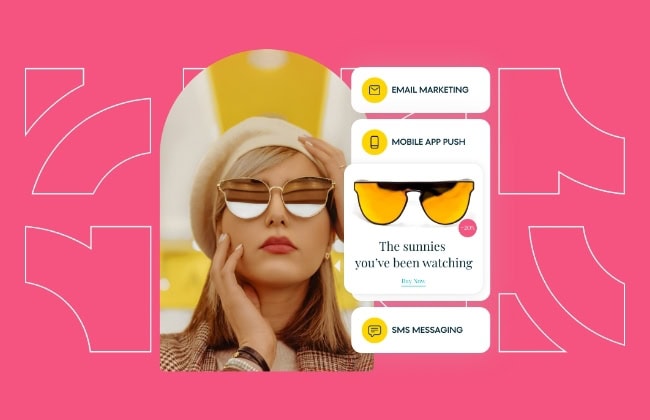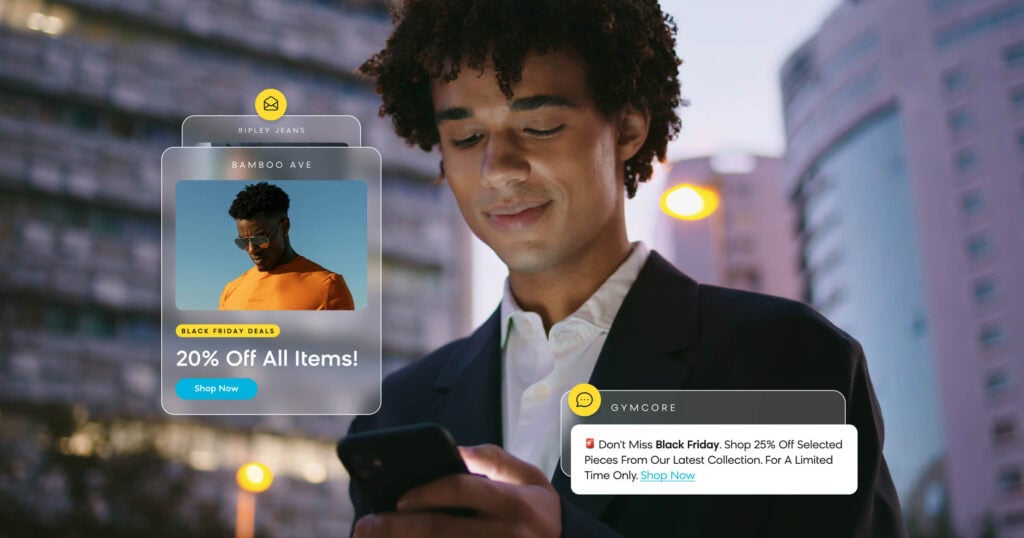As ecommerce fashion becomes more and more competitive, customer retention becomes more and more important.
Retaining customers can be a difficult task, as it requires thoughtful customer retention strategies, collecting customer feedback, and consistent engagement with existing customers. Developing an effective customer loyalty program and understanding why customers return can help increase customer retention significantly.
We will discuss topics such as why repeat customers typically spend more than new customers, the benefits of customer loyalty programs, how to use customer feedback to increase satisfaction and much more. With the right strategies in place, businesses can retain customers and make them loyal.
By understanding customers’ purchasing behavior, businesses can create personalized campaigns that engage existing customers and attract new ones. The effectiveness of a business’s different retention strategies will ultimately determine how many valued customers return after their first purchase.
What Makes Building Customer Loyalty Difficult?
Loyal customers will end up spending 67% more than new customers. Plus, it’s easier to sell to someone again than for the first time.
No wonder customer retention and advocacy was voted the second most important priority for marketers worldwide in 2023. Why wouldn’t it be? But here’s the thing…
Only 50% established a budget for improving the customer experience.
Let’s dive into this challenge of customer retention marketing. We’ll explore how companies can overcome common obstacles and win the hearts of their customers. By the end, you’ll know the basics of loyalty and the secret weapon smart ecommerce fashion companies use to execute on their customer retention goals.
What is the Customer Loyalty Challenge?
We’re seeing more ads than ever. Your customers are getting bombarded with content from all angles aiming to grasp their attention and engagement. This isn’t slowing down. If brands don’t get in the game, they’re going to be left behind.
Loyalty is earned in the digital commerce fashion space by providing consistent value, engagement, and attention. However, there seems to be a bit of a disconnect between what marketers believe it takes to cultivate loyalty and what actions actually attract a loyal customer.
What consumers actually care about:
As marketers, it’s easy to get caught up in the storytelling and passion of the brand rather than executing your customer retention strategy as you should be. Making others feel important and connected to your values is, no doubt, a smart way to establish that initial spark. However, it’s the convenience and consistency which attracts loyalty over time.
A study showed that 98% of marketers agree that personalized experiences increase customer loyalty. And 83% of consumers agree as well, meaning personalizing experiences that are relevant to each customer is crucial.
The customer loyalty challenge lies in a brand’s ability to personalize the customer experience in a consistent and quality way that will encourage customers to keep coming back.
Personalization has become an industry standard for delivering engaging customer experiences at scale. Visitors expect the content they see to be relevant for them and help them streamline the buying process. Activities such as personalized content or product recommendations have become a widely used marketing tactic.
That’s because non-relational databases became the norm. Companies began to organize that data into what’s known as a single customer view (SCV); a collection of highly detailed data profiles for every individual customer, updated in real time.
With this amount of customer data now in play, marketers can track various aspects of customer behavior. They can create highly detailed customer segments based on the detailed information they are now gathering. This organized customer data now empowers marketers to make better decisions and create stronger campaigns, giving businesses the power to connect and engage with customers like never before.
Why Customer Retention and Customer Loyalty Matter
When you also consider the rising ad prices, the need for customer loyalty starts to become apparent. With increasing customer acquisition costs, investing in retention is by far the best option for ecommerce fashion companies.
Industry leaders in ecommerce fashion often seem like insurmountable competitors. But remember, they grew that large because of their dedication to the customer and offering the most optimal experience possible.
If you want to win at the game of digital commerce, it starts with customer loyalty.
That’s what the giants understand. Companies like Nike have been so successful in building brand loyalty and retaining customers because they understand their customers and offer experiences that display that they have that understanding.
Remember, Nike started off as Blue Ribbon Sports in 1964, selling track and field shoes to young athletes. By focusing on the customer experience, Nike has built the empire — both digital and physical — that it has today and expanded into all aspects of fashion and many other areas.
It’s not easy to grow a customer-centric company, but it’s clearly worth it. There’s a huge opportunity for business growth once you learn how to overcome the customer loyalty challenge.
Thankfully, it’s not as difficult as it seems.
How Data Empowers Customer Loyalty and Customer Retention
Today, access to user-friendly technology has made personalization easier than ever. If you’re looking to overcome the customer loyalty challenge, there’s never been a better time.
Retention is one of the most important performance indicators in your business. The three most important steps for companies to watch in the process include:
- Engagement and retention of new visitors
- Conversions from visitors to buyers
- Retention of buyers into repeat spenders
Omnichannel Communication
Customers want a consistent experience throughout their time with your brand. This experience should start with your first interaction. Unfortunately, many companies can’t track their customer conversations across multiple channels. This lack of continuity isn’t a good start for lasting customer loyalty.
Omnichannel communication focuses on providing optimal cross-channel treatment. Here’s an overview of our use case here at Bloomreach:
Customers aren’t receiving cohesive customer service. Cross-channel communication leads to information loss, which in turn causes higher costs and lost sales.
The solution required a holistic approach to bring all the channels together. Here’s an overview of how we thought to solve the problem.
- Ensure all channels use the web to submit service requests from customers
- Create web layers so a customer service agent gets assigned to a specific customer
- Enable automated direct actions (e.g. email a link) for various scenarios

RFM Lifecycle Automation
Loyal customers can vanish without warning. Create automated campaigns based on segments using recency, frequency, and monetary value as criteria. An enticing incentive at the right time is the perfect way to reactivate loyal customers, and is a part of proper customer lifecycle management, which will ensure you’re sending the right offers to the right customers every time.
Companies can only sell a new customer 5-20% of the time. Pretty weak compared to the 60-70% of the time you’ll close the deal with a past customer. So, what’s the solution?
Here’s what we shared in our use case on the subject:
Check the activity of loyal customers. When they become inactive for a defined period of time, give them free credits for their next order and send an email with this incentive.

Personalized Communication and Recommendations
Segmenting your email newsletters is much better than sending the same message to every subscriber. But newsletters can be customized even further, targeting individual users with personalized recommendations.
Using a recommendation method like collaborative filtering, you can even predict what an individual customer might like based on the interests of customers that are similar to them.

How to Foster Customer Loyalty Through Omnichannel Communication
CRM managers spend their day adding new marketing channels and finding ways to increase the revenue from their existing customer base. It’s their mission to ensure that the customer has the best experience possible. The weight of maximum customer satisfaction rests on their shoulders.
Companies can’t ignore customers in today’s digital environment. Dissatisfaction isn’t vented through one-on-one conversations, it’s plastered across the web as frustrated Facebook rants, angry tweets, and 1-star reviews on popular web pages.
Customer reviews are the most common way to get information before deciding to purchase, as 54% of people are looking at customer reviews before buying a product.
So, if you want to foster customer loyalty, you’ve got to put in the work. People want companies who are committed to excellent customer service. When they are, customers will spend more with them. Similarly, many will try out new companies just to find better customer service.
It’s important for companies to keep track of customer interactions, behaviors, and conversations across every platform.
Omnichannel communication is a modern-day approach to customer service that ensures a seamless experience, no matter where they log on.
Tips for Fostering Customer Retention and Customer Loyalty
The fierce competition in the ecommerce fashion world means companies need to focus on branding. Brands build businesses that know how to communicate their story with the end consumer. This advantage can set you apart in the sea of competition.
Now, we’re not naive. Relationship management is a tricky business, and fostering customer loyalty is a real challenge for most businesses.
If you want to win in fashion, you need omnichannel communication. By segmenting your customers, personalizing the communication, and engaging at the right time, you can start building well-branded relationships that matter.
1. Proper Customer Segmentation
Customer segmentation enables you to run highly relevant campaigns, which can lead to customer loyalty and increase customer lifetime value. More than half (54%) of marketers worldwide reported better brand engagement because of increased personalisation efforts. Segmentation makes that possible.
Traditionally, marketers have segmented customers in four ways:
- Geographic (i.e., where they are)
- Demographic (i.e., gender, age, income)
- Psychographic (i.e., social class, personality type)
- Behavioral (i.e., spending patterns, brand loyalties, etc.)
AI-powered engagement automation makes it easier than ever to gather information on your audience, and the options for segmentation are nearly limitless. It also gives you the option to predict the next actions for each customer and take action based on the probability of them completing your goals or engaging with your content.
2. Personalized Communication
Customers want one-on-one communication and will go out of their way to get it. In fact, 63% of consumers say they will share private data in exchange for a personalized shopping experience.
By gathering data on customer behavior, you can enact complex personalization strategies:
- Customize each upsell offer based on individual interests and behaviors
- Overlay personalized abandoned cart items to help shoppers pick up where they left off
- Offer a time-sensitive deal as an overlay when visitors start to leave the site
With the ongoing advancements in technology and AI, companies can now understand customer needs, provide solutions, share valuable information, and educate them on your products – before they ask for help.

3. Timely Engagement
It’s important to meet the customer where they’re at in the buying process. Website banners provide you with the opportunity to deliver the right message to the right person at the right time.
Here are a few of the ways you can use banners to create an engaging customer experience:
Announcements: Influence customer behavior by highlighting important information, like free shipping, at just the right time in the buying process
Get “On the List”: Stir up interest to your brand’s push notifications, SMS database, or email newsletter with a relevant offer
Listen: Present surveys to new, loyal, or never-before customers to create a more comprehensive profile of customer attributes
Up the Ante: Add some buying pressure by showing how many others are viewing, buying, or subscribing in real-time
Discover new products: Analyze website behavior in real-time to recommend the next great product to take a look at during the same visit
Technology Empowers Progress
AI-powered technology makes this depth of segmentation, personalization, and engagement possible. Companies can knock the customer experience out of the park. All it takes is the right strategy, a feature-rich system, and intelligent robot sidekicks.
With sophisticated software now available for omnichannel communication, companies can create remarkable customer experiences.
How can companies move their relationship with customers forward?
How can they continue these relationships for years, if not decades?
How can AI support businesses in their customer experience goals?
Features like the single customer view (SCV), scenarios, and weblayers (aka on-site overlays) all combine to provide users with the omnichannel customer experience that they’re looking for. Let’s take a closer look at each of those features.
Real-time Segmentation
Being able to differentiate between your customers based on their various attributes (likes/dislikes, purchase history, etc.) will help you create personalized content. Being able to do it in real time means you can create truly impactful customer journeys that keep them coming back again and again.
Having real-time segmentation gives you the ability to create deeper analyses of your customers and their preferences, and also uncover trends in real time. As a result, you’ll be able to automatically trigger personalized campaigns and even predict your customers’ next steps (e.g., what time they’re most likely to open an email or what offer they’re most likely to convert on).
Single Customer View
It’s impossible to manually track your customer interactions across all the different platforms. True omnichannel communication means connecting on several social platforms, on the phone, in a text, through email, in person, and even at local events.
A single customer view (SCV) is a collection of user data profiles. Each profile includes the user’s purchase history, site activity, product recommendations, and more — all in one easy-to-use location. All of this highly detailed and organized data makes it easy to create highly detailed segments from your customer base. A true SCV is scalable, flexible, and updates itself in real-time — ensuring that your segments and customer communications are always up-to-date and relevant to each user.
Scenarios
When it comes to timely engagement, scenarios are a lifesaver. They’re an easy way to connect with customers throughout the journey through emails, push notifications, or webhooks. Think of them as a series of “if, then” statements you can use to cultivate the experience.
Send a welcome email when someone signs up for your email list
Use a webhook to let you know when someone has checked in at your store
Send a post-purchase feedback email and send a notification to customer service if there is any negative feedback
Run a special ad campaign for those who have an abandoned product in their carts

3 Top Customer Retention and Customer Loyalty Strategies
We’ve mentioned quite a bit of technical jargon here today. Many guides of this nature tend to leave the reader without instructions on how to use the pieces and parts.
We don’t want to do that to you.
In fact, we’ve dusted off some of our favorite strategies from Bloomreach work with clients. Think of the following like your three “starter strategies” for omnichannel communication.
 Improve Conversion Rates With Price Drop Emails
Improve Conversion Rates With Price Drop Emails
If you’ve ever shopped for a sweater or shoes online but have just been a bit taken aback by the price of said item, then you’ll love this use case.
If your company had Bloomreach Engagement’s watchdog automatic price drop alert use case, the chances of selling the aforementioned sweater or pair of shoes would significantly increase once the company put them on sale. That’s because Bloomreach automatically adds these products as “watchdog items” to a customer’s profile once they are viewed and not purchased.
When they go on sale, if the customer has opted in for communications, they receive a personalized email letting them know the product that was previously viewed is now on sale at a discounted rate. This use case can drive exponential revenue for items on sale and can make your customers feel as if you understand their preferences.

 Improve Engagement With AI-Based Recommendations
Improve Engagement With AI-Based Recommendations
Proving you know your customers is a massive step towards achieving customer loyalty. One of the best ways of showcasing this customer knowledge? Using AI to offer hyper-relevant product recommendations.
Bloomreach Engagement product recommendations leverage all customer and catalog data to find the most relevant and suitable items for each individual customer in each situation. And it happens fast. Bloomreach customers can deliver product recommendations to repeat consumers or first-time visitors in real-time (or within 0.1 seconds, to be exact), resulting in what feels like magically personalized experiences for customers.
When you show your customers the right dresses, shoes, or accessories, they are significantly more likely to make a purchase.

 Increase On-Site Conversions With Contextual Personalization
Increase On-Site Conversions With Contextual Personalization
While A/B testing can be effective for personalization, Bloomreach can go above and beyond the impact of A/B testing with contextual personalization.
A/B testing will serve your customers the overall best variant of your tested campaigns based on average performance. Contextual personalization serves what is best for each customer based on the contexts given by the testing. Essentially, it solves the multi-armed bandit problem.
Contextual personalization allows ecommerce fashion companies to use AI to determine which offer a customer is most likely to convert with. This leads to increased conversion rates and happier customers.
Winning The Customer Loyalty Challenge With Bloomreach
If ecommerce fashion companies want to stay relevant in the coming decade, it’s time to start taking AI-powered marketing technology seriously. It starts with a hyper-focus on building customer loyalty and to do that, you must have a deep knowledge of your customers and how to best serve them.
The power of personalised, automated, omnichannel communication has a direct impact on your bottom line. If you’d like to find out how Bloomreach can simplify your processes, solve problems, and elevate growth, reach out today to request your personalized demo. We’d love for you to be our next success story!


 Improve Conversion Rates With Price Drop Emails
Improve Conversion Rates With Price Drop Emails Improve Engagement With AI-Based Recommendations
Improve Engagement With AI-Based Recommendations Increase On-Site Conversions With Contextual Personalization
Increase On-Site Conversions With Contextual Personalization


